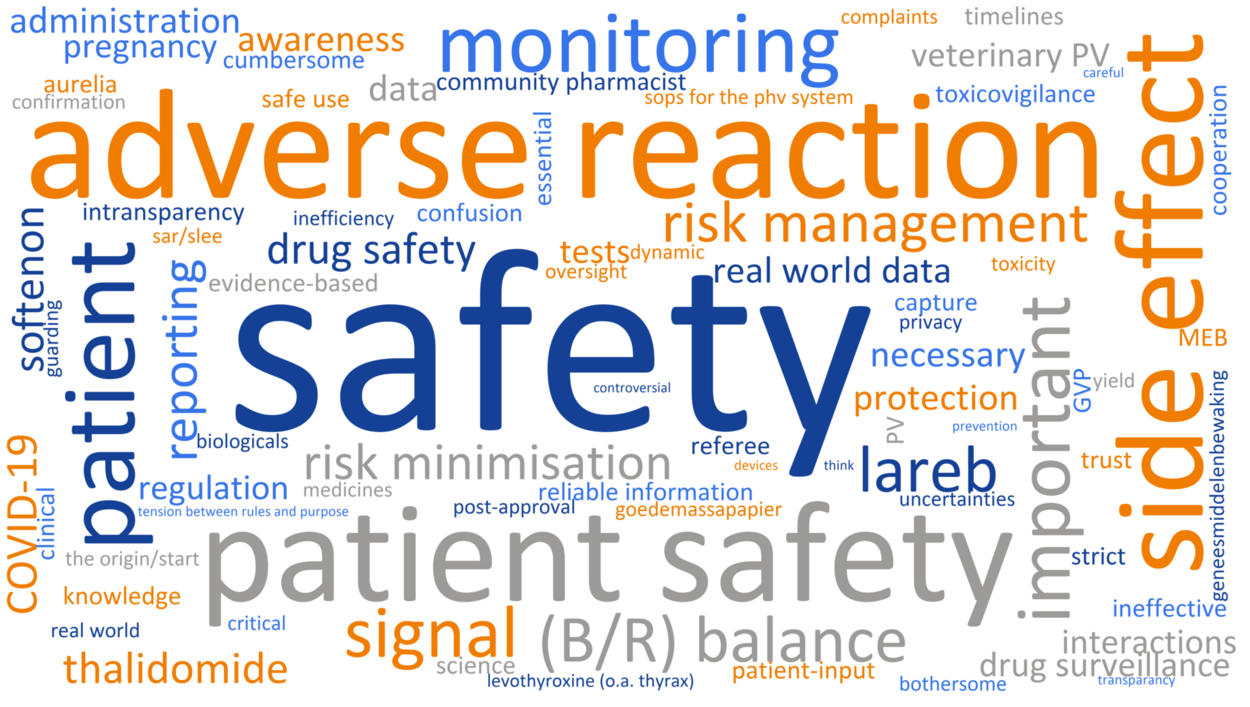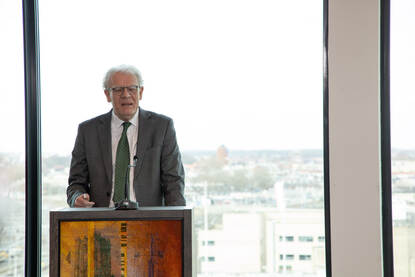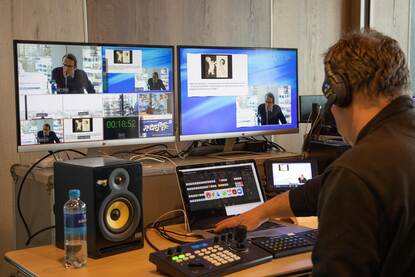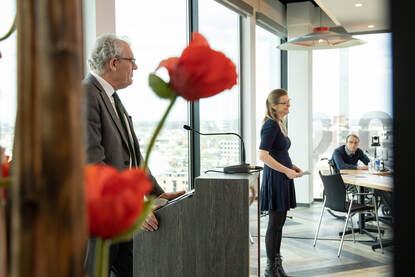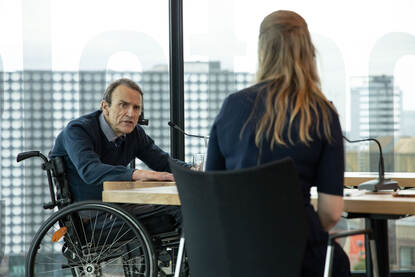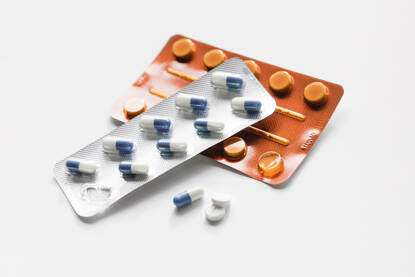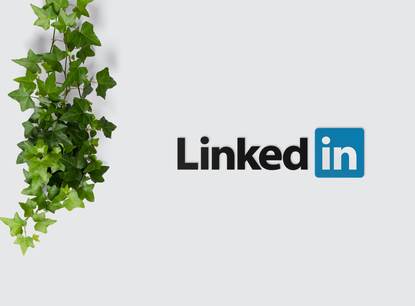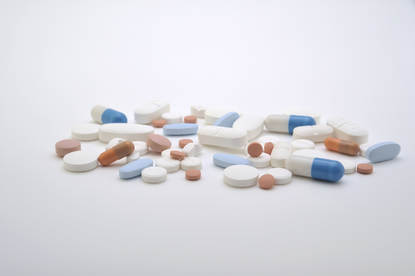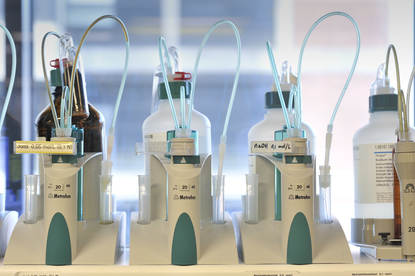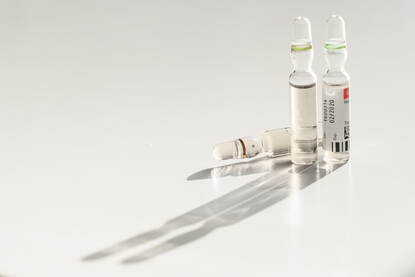Last year marked the 25th birthday of the MEB’s pharmacovigilance department. During this year’s MEB Science Day, we looked at what has happened in the past decades on detection, assessment, monitoring and prevention of adverse drug reactions: the Evolution of 25 years of Pharmacovigilance.
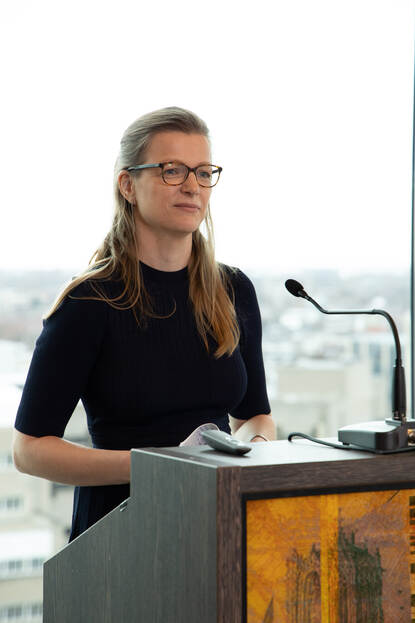
Due to COVID-19 restrictions, this year’s Science Day was held as an online event, with key speakers presenting their lectures from the studio and several PhD Students discussing their research from home. “It was a pity that attendees could not be met in person, but going online did enable more people to participate”, says Dr. Marjon Pasmooij, Science programme manager at the MEB. “With over 300 people attending online from the pharmaceutical industry, academia, patient representatives, regulatory authorities and other attendees we look back on a successful and inspiring meeting.”
During the plenary session, dr. Sabine Straus (MEB), prof. Bruno Stricker (Health and Youth Care Inspectorate - Pharmaceutical Products/Erasmus Medical Centre) and prof. Eugène van Puijenbroek (Netherlands pharmacovigilance centre Lareb/University of Groningen) discussed past, present ánd future of pharmacovigilance.
Historic overview
Prof. Ton de Boer, chair of the MEB: “Bruno and Sabine gave us beautiful overviews of the history of pharmacovigilance from two different perspectives. Sabine focused on several future efforts in international collaboration. What I took home from Bruno’s story is that it will always stay important to go back to the roots, the original data, to gain or improve insights. And although new techniques and methods are very valuable, we should keep in mind their shortcomings.”
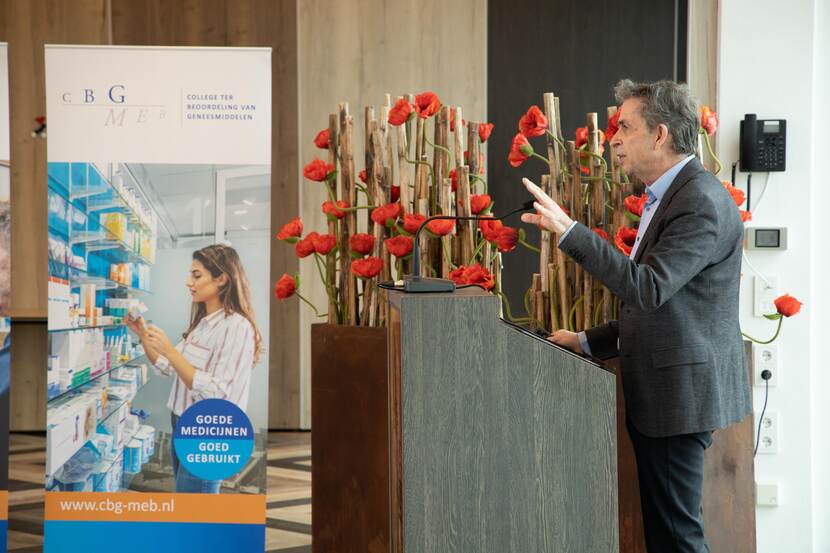
Patient’s perspective
“Original data also played an important role in Eugène’s message. He taught us how to look at case reports and the importance of always taking the personal situation into account. We as assessors might not always have the same information available as the reporting healthcare professionals or patients do. The focus on what’s important for the patient is increasing and that is a very positive development. An adverse reaction might not lead to hospitalization, but still could have a large impact on everyday life.”
Data
The increase in available data has brought us a lot, just like the linking of reports and data and combining datasets. The audience agreed: during a poll one in three of the attendees named the establishment of the Eudravigilance database as the most important improvement over the past years:
Poll
| PSUR worksharing | Eudravigilance database | MedDRA | Risk Management Plan | Additional risk minimisation measures | PRAC | Scientific Research on pharmacovigilance tools | |
|---|---|---|---|---|---|---|---|
| Score (%) | 7 | 36 | 3 | 23 | 4 | 14 | 13 |
Besides the Eudravigilance database, the attendees pointed out that risk management plans, the establishment of the PRAC and scientific research were important contributors to an improvement in pharmacovigilance in the past decades.
Some of the PhD students have made their presentations available. Here you can find the PDF's.
PhD sessions
Participants had the possibility to join two of the five PhD sessions after the plenary session. All PhD students follow a combined PhD trajectory, working part-time as an assessor at the MEB, and part-time on their PhD project. In each PhD session, a specific study was highlighted related to pharmacovigilance: Pharmacovigilance of biologicals (Lotte Minnema), Risk minimisation measures (Remy Francisca), Regulatory learning (Lourens Bloem), Risk communication (Esther de Vries) and Exposure to biologicals during pregnancy/lactation (Nafise Ghalandari). It were very informative sessions with lots of questions.
Article continues below the photographs
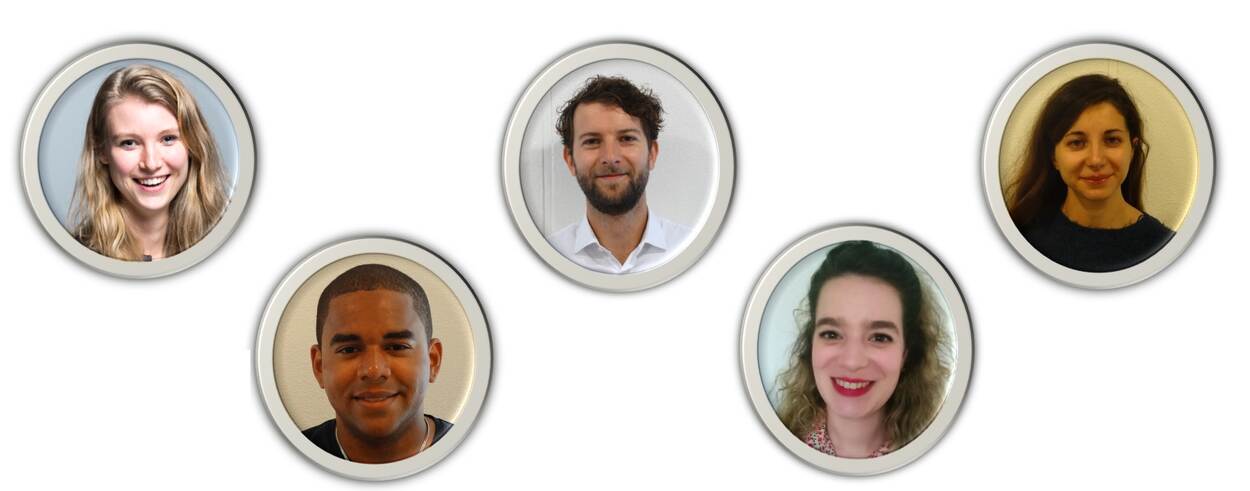
Pharmacovigilance – a hassle?
During the closing session of the day the key speakers gathered for a short and lively panel discussion. Discussion leader Marjon Pasmooij drops a critical note, posing the question if pharmacovigilance can be considered a ‘hassle’.
“Over the past years there have been large efficiency gains. The Periodic Safety Update Reports (PSUR’s) for example, that provide an assessment for all products with the same active substance for the EU.” Bruno agrees: “Risk management plans that are submitted at a European level are a big improvement in making the process of handling signals more efficient.”
Eugène stresses on the importance of proper analysis. “That just takes time. But it’s time that is essential, since we want to deliver high quality, and that is what the focus should be on.” Sabine: “I totally agree. The best we can do as regulators is to make sure we have the best possible measures in place. Talking with healthcare professionals ánd patients is essential to get to the best measures. And of course, there’s always room for improvement, but I definitely wouldn’t call pharmacovigilance inefficient at the moment!”
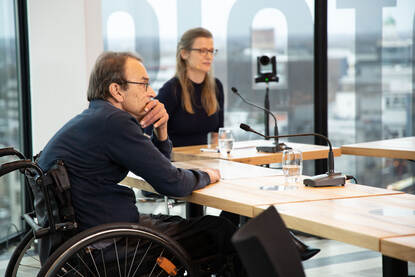

COVID-19
Of course COVID-19 is playing a prominent role in everyday life . But did it also change the way we look at pharmacovigilance and the way we look at signals? “Well, tools and systems - both spontaneous reporting and cohort event monitoring - were already in place and are used ‘like normal’”, Eugène says. “What isn’t the same, is the extent in which they are used. People – both patients and doctors – are very aware of everything what is happening now. That leads to a large amount of reports that are being submitted to Lareb. Besides that, the large scale of this vaccination campaign will also lead to a large amount of reports. What also is different are the shorter timeframes we have to deal with. A big difference.”
Sabine nods in agreement. “On a regulatory level, the rolling reviews for the approval of corona vaccines are very challenging, due to the short timelines Eugène already mentioned. Also from the pharmacovigilance perspective. The PRAC has had several already extraordinary meetings this year specifically for the corona vaccines.” But there’s also an upside to that, Sabine adds. “The amount of international collaboration. It has never before been so strong. The information exchange is on a whole new level. The times are challenging and interesting indeed. And as far as pharmacovigilance is concerned, the benefit-risk balance is even more important now, since we vaccinate (relatively) healthy people at a large scale.”
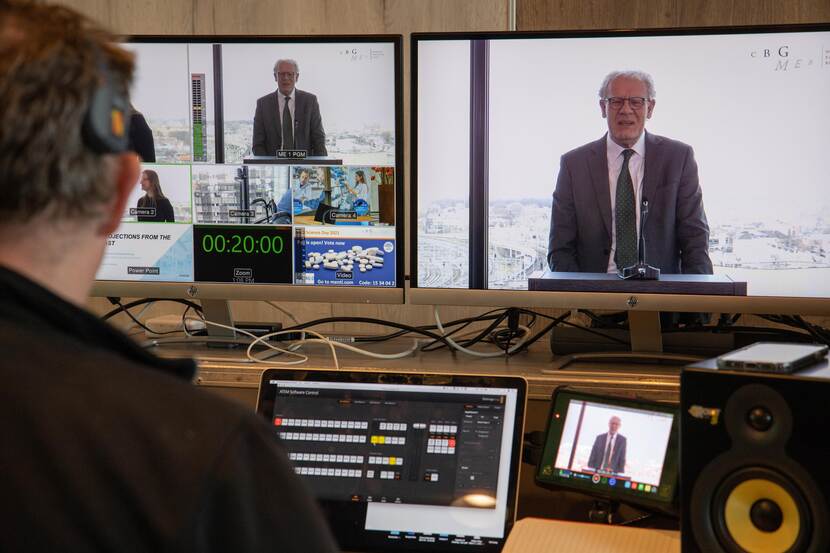
Closing remarks
During his closing remarks, professor Ton de Boer looked back on his early career days as a researcher. “Looking back, life was quite simple”, he says, smiling. “We did our studies, published a paper and most of the times, we concluded that ‘more research was necessary’. How different that has become now. Because in the regulatory field, a conclusion like that just isn’t an option. It must be yes or no. Take a product off the market or not? Alter an SmpC or not, add or change an indication or not….? That leads to difficult situations, long discussions and tough decisions.”
A recent example of a situation is on hydrochlorothiazides. “Those diuretics were recently associated with an increased risk of non-melanoma skin cancer (NMSC). We realized we did not have all the information. But with information lacking, and a situation at hand that impacted patients, we took our decision to stay on the safe side. That led to a PRAC recommendation for a variation and an amendment of the product information. From a researcher’s perspective, ‘more research’ might bring other insights, sure. But here we took stand from a vigilance point of view, for the patients. Which in the end is what pharmacovigilance is all about.”
